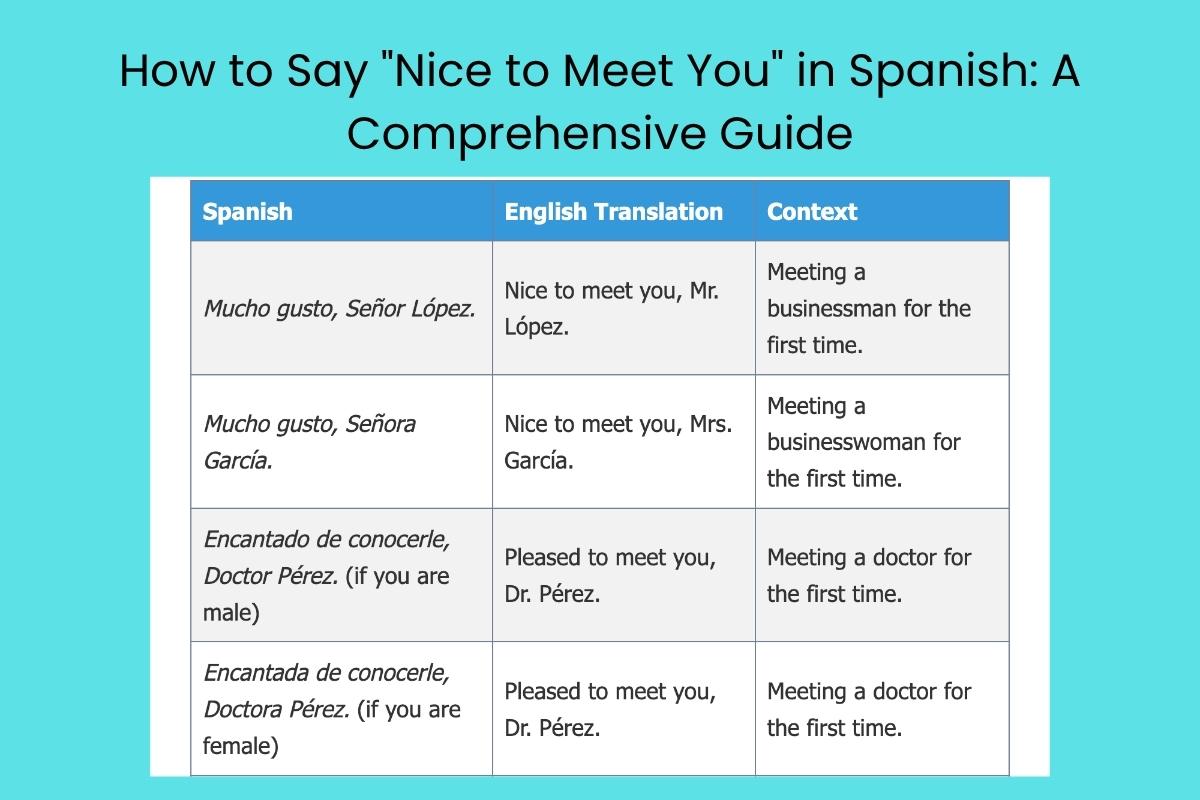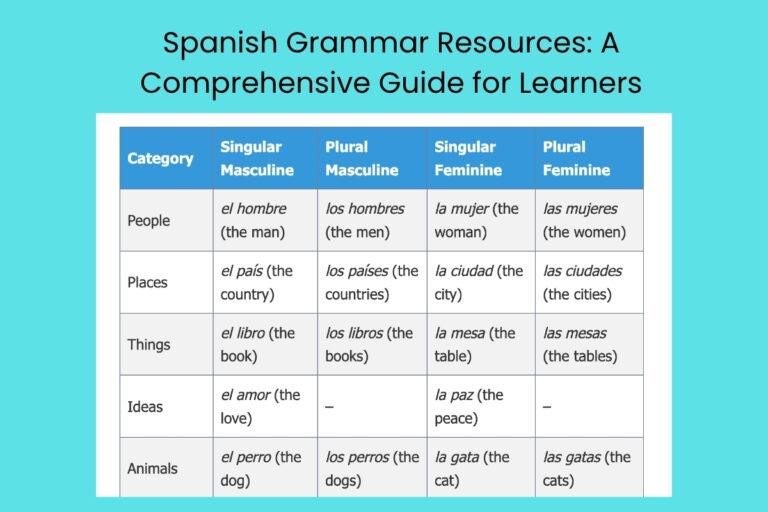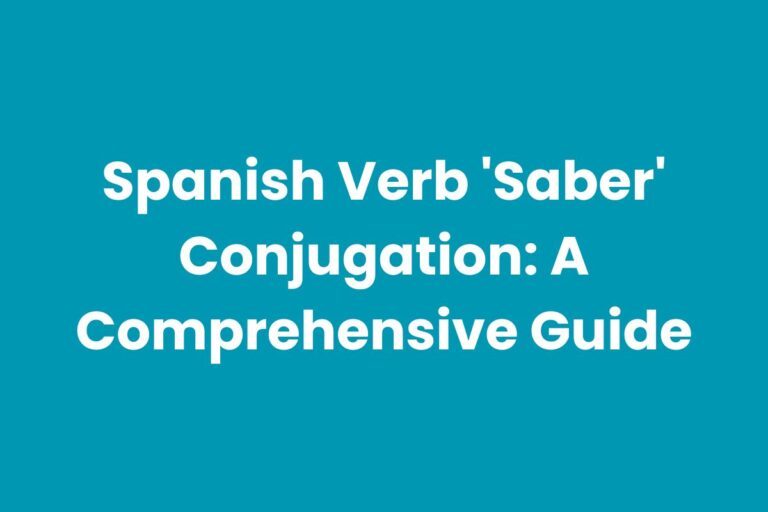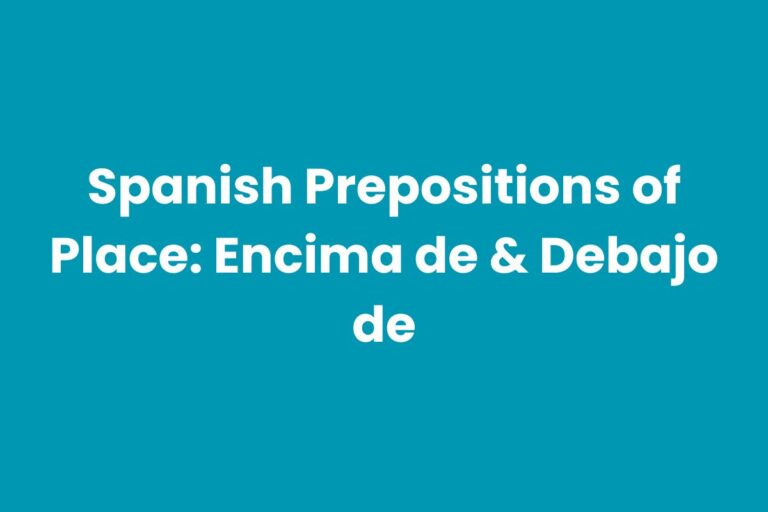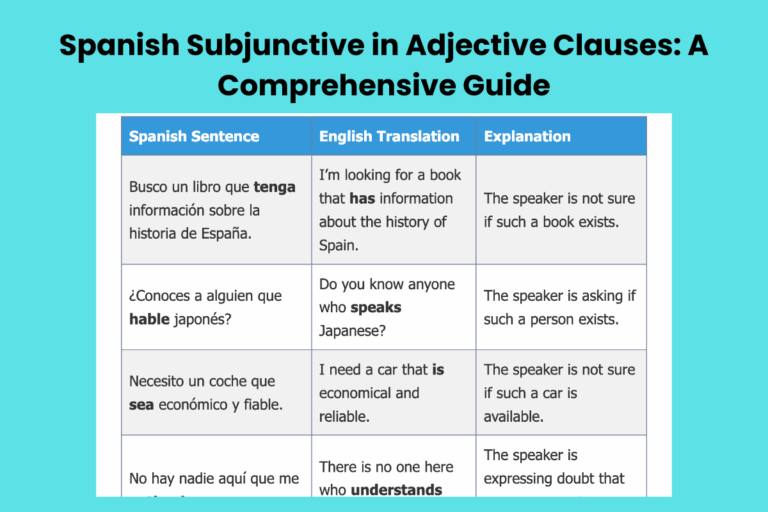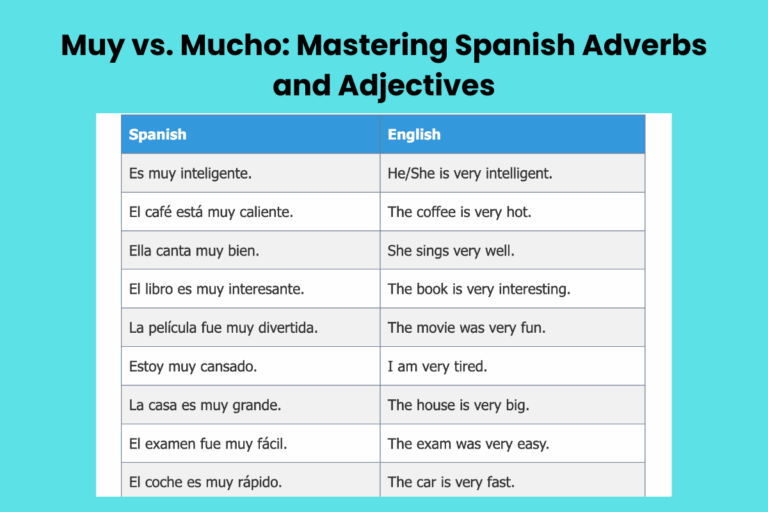How to Say “Nice to Meet You” in Spanish: A Comprehensive Guide
Learning how to say “nice to meet you” in Spanish is crucial for initiating conversations and building relationships. It’s one of the first phrases you’ll learn and use when meeting someone new.
Understanding the nuances of this phrase, including formal and informal variations, ensures you make a positive first impression. This article provides a detailed guide for English speakers to master this essential Spanish greeting.
Whether you’re a beginner or an advanced learner, this comprehensive explanation will equip you with the knowledge and practice to confidently introduce yourself in Spanish.
Table of Contents
- Introduction
- Definition: “Nice to Meet You” in Spanish
- Structural Breakdown
- Formal vs. Informal Greetings
- Gender Agreement in Greetings
- Regional Variations
- Examples of “Nice to Meet You” in Spanish
- Usage Rules
- Common Mistakes
- Practice Exercises
- Advanced Topics
- FAQ: Frequently Asked Questions
- Conclusion
Definition: “Nice to Meet You” in Spanish
The most common way to say “nice to meet you” in Spanish is “Mucho gusto.” This phrase is universally understood and can be used in most situations. It literally translates to “much pleasure” or “much delight.” However, there are other variations that are more appropriate depending on the context, formality, and region.
The phrase functions as a polite greeting used immediately after being introduced to someone. It indicates that you are pleased to make their acquaintance. While “Mucho gusto” is the standard, Spanish offers a variety of ways to express this sentiment. These include more formal options and expressions that incorporate gender agreement.
Structural Breakdown
Let’s break down the structure of the most common phrase, “Mucho gusto.”
- Mucho: This word means “much” or “a lot.” It modifies the noun that follows, indicating a significant amount.
- Gusto: This word means “pleasure” or “delight.” It is a masculine noun in Spanish.
Therefore, “Mucho gusto” literally means “much pleasure.” The simplicity of this structure makes it easy to remember and use. The phrase doesn’t require any verb conjugation, making it accessible for beginners.
Other variations might include verbs and pronouns, such as “Encantado/a de conocerte/conocerlo/conocerla,” which translates to “Pleased to meet you.” In this case, the structure is more complex:
- Encantado/a: This is the past participle of the verb “encantar” (to enchant, to delight). It means “delighted” or “charmed.” The ending changes to -o for masculine and -a for feminine.
- De: This is a preposition meaning “of” or “to.”
- Conocer: This is the infinitive form of the verb “to know” or “to meet.”
- Te/Lo/La: These are direct object pronouns. “Te” is the informal “you,” while “Lo” is the formal “you” (masculine) and “La” is the formal “you” (feminine).
Formal vs. Informal Greetings
Choosing the right level of formality is crucial in Spanish. Using an informal greeting in a formal setting can be considered disrespectful.
Conversely, using a formal greeting in an informal setting can seem overly stiff or distant.
Formal situations: These include meeting someone for the first time in a professional setting, speaking with someone older than you, or interacting with someone in a position of authority (e.g., a boss, a teacher, or a government official).
Informal situations: These include meeting friends, family members, or people of a similar age in a casual setting.
Here’s a breakdown of formal and informal ways to say “nice to meet you”:
- Formal:
- Mucho gusto. (Standard formal greeting)
- Encantado/a de conocerle/conocerla. (Pleased to meet you – using the formal “you”)
- Es un placer conocerle/conocerla. (It’s a pleasure to meet you – using the formal “you”)
- Informal:
- Mucho gusto. (Can also be used informally)
- Encantado/a de conocerte. (Pleased to meet you – using the informal “you”)
- Un placer conocerte. (A pleasure to meet you – using the informal “you”)
Gender Agreement in Greetings
In Spanish, adjectives and pronouns often need to agree in gender with the person you are referring to. This is particularly important with phrases like “Encantado/a.”
- If you are male: Use “Encantado.”
- If you are female: Use “Encantada.”
For example:
- A man says: “Encantado de conocerte.”
- A woman says: “Encantada de conocerte.”
The gender agreement applies only to the person speaking, not the person being addressed. The other phrases, like “Mucho gusto,” do not require gender agreement and can be used by anyone.
Regional Variations
While “Mucho gusto” is universally understood, some regions might have their own preferred ways of saying “nice to meet you.” These variations are often subtle but can add a touch of local flavor to your greetings.
For example, in some Latin American countries, you might hear phrases like:
- “Un placer.” (A pleasure)
- “Igualmente.” (Likewise – used as a response)
These variations are generally informal and are used as alternatives or responses to the standard greetings. Being aware of these regional differences can help you better understand and adapt to different Spanish-speaking cultures.
Examples of “Nice to Meet You” in Spanish
Here are several examples of how to use “nice to meet you” in various contexts. These examples cover both formal and informal situations, as well as the appropriate gender agreement.
Formal Examples
These examples are suitable for professional settings, interactions with elders, or when addressing people in positions of authority. Here’s a table with 30 examples:
| Spanish | English Translation | Context |
|---|---|---|
| Mucho gusto, Señor López. | Nice to meet you, Mr. López. | Meeting a businessman for the first time. |
| Mucho gusto, Señora García. | Nice to meet you, Mrs. García. | Meeting a businesswoman for the first time. |
| Encantado de conocerle, Doctor Pérez. (if you are male) | Pleased to meet you, Dr. Pérez. | Meeting a doctor for the first time. |
| Encantada de conocerle, Doctora Pérez. (if you are female) | Pleased to meet you, Dr. Pérez. | Meeting a doctor for the first time. |
| Es un placer conocerle, Profesor Rodríguez. | It’s a pleasure to meet you, Professor Rodríguez. | Meeting a professor for the first time. |
| Mucho gusto en conocerle, Señorita Álvarez. | Nice to meet you, Miss Álvarez. | Meeting a young woman in a formal setting. |
| Mucho gusto, Embajador. | Nice to meet you, Ambassador. | Meeting an ambassador. |
| Encantado de conocerle, Señor Alcalde. (if you are male) | Pleased to meet you, Mr. Mayor. | Meeting a mayor. |
| Encantada de conocerle, Señora Presidenta. (if you are female) | Pleased to meet you, Madam President. | Meeting a female president. |
| Mucho gusto, Su Excelencia. | Nice to meet you, Your Excellency. | Meeting a high-ranking official. |
| Es un placer conocerle, Director. | It’s a pleasure to meet you, Director. | Meeting a company director. |
| Mucho gusto, Juez. | Nice to meet you, Judge. | Meeting a judge. |
| Encantado de conocerle, Comisario. (if you are male) | Pleased to meet you, Commissioner. | Meeting a police commissioner. |
| Encantada de conocerle, Senadora. (if you are female) | Pleased to meet you, Senator. | Meeting a female senator. |
| Mucho gusto, Ministro. | Nice to meet you, Minister. | Meeting a government minister. |
| Es un placer conocerle, Decano. | It’s a pleasure to meet you, Dean. | Meeting a university dean. |
| Mucho gusto, Arquitecto. | Nice to meet you, Architect. | Meeting an architect. |
| Encantado de conocerle, Ingeniero. (if you are male) | Pleased to meet you, Engineer. | Meeting an engineer. |
| Encantada de conocerle, Abogada. (if you are female) | Pleased to meet you, Lawyer. | Meeting a female lawyer. |
| Mucho gusto, Contadora. | Nice to meet you, Accountant. | Meeting an accountant. |
| Es un placer conocerle, Gerente. | It’s a pleasure to meet you, Manager. | Meeting a manager. |
| Mucho gusto, Subdirector. | Nice to meet you, Assistant Director. | Meeting an assistant director. |
| Encantado de conocerle, Jefe de Departamento. (if you are male) | Pleased to meet you, Head of Department. | Meeting a head of department. |
| Encantada de conocerle, Coordinadora. (if you are female) | Pleased to meet you, Coordinator. | Meeting a female coordinator. |
| Mucho gusto, Analista. | Nice to meet you, Analyst. | Meeting an analyst. |
| Es un placer conocerle, Asesor. | It’s a pleasure to meet you, Advisor. | Meeting an advisor. |
| Mucho gusto, Consultor. | Nice to meet you, Consultant. | Meeting a consultant. |
| Encantado de conocerle, Representante. (if you are male) | Pleased to meet you, Representative. | Meeting a representative. |
| Encantada de conocerle, Secretaria. (if you are female) | Pleased to meet you, Secretary. | Meeting a female secretary. |
| Mucho gusto, Tesorero. | Nice to meet you, Treasurer. | Meeting a treasurer. |
These examples provide a range of formal greetings suitable for various professional and respectful interactions. Remember to use “le” instead of “te” to maintain formality.
Informal Examples
These examples are perfect for casual settings, meeting new friends, or interacting with people you’re familiar with. Here’s a table with 30 examples:
| Spanish | English Translation | Context |
|---|---|---|
| Mucho gusto, ¡qué bueno conocerte! | Nice to meet you, it’s great to meet you! | Meeting someone at a party. |
| Encantado de conocerte, me llamo Juan. (if you are male) | Pleased to meet you, my name is Juan. | Introducing yourself to a new friend. |
| Encantada de conocerte, soy María. (if you are female) | Pleased to meet you, I’m María. | Introducing yourself to a new friend. |
| Mucho gusto, ¿cómo estás? | Nice to meet you, how are you? | Starting a conversation with someone new. |
| Un placer conocerte, soy nuevo aquí. | A pleasure to meet you, I’m new here. | Introducing yourself in a new place. |
| Mucho gusto, ¡qué coincidencia! | Nice to meet you, what a coincidence! | Meeting someone unexpectedly. |
| Encantado de conocerte, ¿eres amigo de Carlos? (if you are male) | Pleased to meet you, are you a friend of Carlos? | Meeting a friend of a friend. |
| Encantada de conocerte, ¿vienes a menudo aquí? (if you are female) | Pleased to meet you, do you come here often? | Starting a conversation at a café. |
| Mucho gusto, ¡qué alegría conocerte! | Nice to meet you, what a joy to meet you! | Expressing excitement about meeting someone. |
| Un placer conocerte, ¡nos vemos por aquí! | A pleasure to meet you, see you around! | Saying goodbye after a brief meeting. |
| Mucho gusto, ¿te gusta la música? | Nice to meet you, do you like music? | Finding common interests. |
| Encantado de conocerte, ¿qué estudias? (if you are male) | Pleased to meet you, what are you studying? | Asking about someone’s studies. |
| Encantada de conocerte, ¿a qué te dedicas? (if you are female) | Pleased to meet you, what do you do? | Asking about someone’s profession. |
| Mucho gusto, ¡qué pequeño es el mundo! | Nice to meet you, it’s a small world! | Meeting someone in an unexpected place. |
| Un placer conocerte, ¡me caes bien! | A pleasure to meet you, I like you! | Expressing a good impression. |
| Mucho gusto, ¡tenemos amigos en común! | Nice to meet you, we have friends in common! | Discovering mutual connections. |
| Encantado de conocerte, ¿eres de por aquí? (if you are male) | Pleased to meet you, are you from around here? | Asking about someone’s origin. |
| Encantada de conocerte, ¿qué te trae por aquí? (if you are female) | Pleased to meet you, what brings you here? | Asking about someone’s reason for being somewhere. |
| Mucho gusto, ¡me encanta tu estilo! | Nice to meet you, I love your style! | Complimenting someone’s appearance. |
| Un placer conocerte, ¡espero verte pronto! | A pleasure to meet you, I hope to see you soon! | Expressing hope for a future meeting. |
| Mucho gusto, ¿te gusta bailar? | Nice to meet you, do you like to dance? | Inviting someone to dance. |
| Encantado de conocerte, ¿cuál es tu número? (if you are male) | Pleased to meet you, what’s your number? | Asking for someone’s phone number. |
| Encantada de conocerte, ¿tienes Instagram? (if you are female) | Pleased to meet you, do you have Instagram? | Asking for someone’s social media. |
| Mucho gusto, ¡eres muy simpático/a! | Nice to meet you, you are very nice! | Complimenting someone’s personality. |
| Un placer conocerte, ¡me has alegrado el día! | A pleasure to meet you, you’ve made my day! | Expressing gratitude for a pleasant meeting. |
| Mucho gusto, ¡hablamos pronto! | Nice to meet you, talk to you soon! | Saying goodbye with the intention to stay in touch. |
| Encantado de conocerte, ¡eres genial! (if you are male) | Pleased to meet you, you’re great! | Expressing admiration. |
| Encantada de conocerte, ¡eres increíble! (if you are female) | Pleased to meet you, you’re incredible! | Expressing admiration. |
| Mucho gusto, ¡eres muy interesante! | Nice to meet you, you’re very interesting! | Expressing interest in someone’s personality. |
| Un placer conocerte, ¡que tengas un buen día! | A pleasure to meet you, have a good day! | Wishing someone a good day after meeting. |
These examples showcase how to use informal greetings in various social contexts, making your interactions more natural and friendly. Remember to use “te” instead of “le” when interacting informally.
Additional Useful Phrases
Here’s a table with additional phrases that you can use alongside “nice to meet you” to enhance your conversations:
| Spanish | English Translation | Context |
|---|---|---|
| ¿Cómo te llamas? (Informal) | What’s your name? | Asking someone’s name in an informal setting. |
| ¿Cómo se llama? (Formal) | What’s your name? | Asking someone’s name in a formal setting. |
| Me llamo… | My name is… | Introducing yourself. |
| ¿De dónde eres? | Where are you from? | Asking about someone’s origin. |
| Soy de… | I am from… | Stating your origin. |
| ¿A qué te dedicas? | What do you do? | Asking about someone’s profession. |
| Soy… | I am a… | Stating your profession. |
| ¿Qué tal? | What’s up? / How’s it going? | A casual greeting. |
| ¿Cómo estás? (Informal) | How are you? | Asking about someone’s well-being in an informal setting. |
| ¿Cómo está? (Formal) | How are you? | Asking about someone’s well-being in a formal setting. |
| Bien, gracias. | Good, thank you. | Responding to “How are you?” |
| Mucho gusto en conocerte también. | Nice to meet you too. | Responding when someone says “nice to meet you.” |
| Igualmente. | Likewise. | A short and polite response. |
| ¿Hablas español? | Do you speak Spanish? | Asking if someone speaks Spanish. |
| Hablo un poco de español. | I speak a little Spanish. | Stating your level of Spanish proficiency. |
| ¿Entiendes? | Do you understand? | Checking if someone understands you. |
| Entiendo. | I understand. | Stating that you understand. |
| No entiendo. | I don’t understand. | Stating that you don’t understand. |
| Por favor. | Please. | A polite request. |
| Gracias. | Thank you. | Expressing gratitude. |
| De nada. | You’re welcome. | Responding to “thank you.” |
| Perdón. | Excuse me. | Apologizing or getting someone’s attention. |
| Lo siento. | I’m sorry. | Expressing regret. |
| ¿Puede repetir, por favor? | Can you repeat, please? | Asking someone to repeat themselves. |
| ¿Cómo se dice… en español? | How do you say… in Spanish? | Asking how to say something in Spanish. |
| ¿Qué significa…? | What does… mean? | Asking the meaning of a word or phrase. |
| ¿Dónde está el baño? | Where is the bathroom? | Asking for the location of the bathroom. |
| ¿Cuánto cuesta? | How much does it cost? | Asking the price of something. |
| ¡Salud! | Cheers! | A toast. |
| ¡Que tengas un buen día! | Have a good day! | Wishing someone a good day. |
These additional phrases will help you navigate basic conversations and show respect in Spanish-speaking environments.
Usage Rules
Here are some key rules to keep in mind when using “nice to meet you” in Spanish:
- Formality: Choose the appropriate greeting based on the level of formality required by the situation.
- Gender Agreement: Remember to use the correct gender agreement with “Encantado/a” based on your own gender.
- Context: Consider the context of the conversation and choose the greeting that best fits the situation.
- Responses: Respond appropriately when someone says “nice to meet you” to you. Common responses include “Mucho gusto también” or “Igualmente.“
Understanding these rules will help you use the phrases correctly and avoid making common mistakes.
Common Mistakes
Here are some common mistakes that English speakers make when saying “nice to meet you” in Spanish:
| Incorrect | Correct | Explanation |
|---|---|---|
| Encantada de conocerla. | A woman must use the feminine form “Encantada.” | |
| Mucho gusto en conocerte. or Mucho gusto. | The preposition “en” is needed or it can be omitted entirely. | |
| Encantado de conocerte. | The preposition “de” is required. | |
| Mucho gusto, Señor. ¿Cómo está? | It is polite to follow up with a question or statement. | |
| Encantado de conocerte. | The preposition “de” is required. | |
| Mucho gusto en conocerte. or Mucho gusto. | The preposition “en” is needed or it can be omitted entirely. | |
| Encantada de conocerlo. | The preposition “de” is required. | |
| Mucho gusto en conocerlo. or Mucho gusto. | The preposition “en” is needed or it can be omitted entirely. | |
| Encantado de conocerla. | The preposition “de” is required. | |
| Mucho gusto en conocerla. or Mucho gusto. | The preposition “en” is needed or it can be omitted entirely. |
Avoiding these common mistakes will help you communicate more effectively and confidently in Spanish.
Practice Exercises
Test your knowledge with these practice exercises.
Exercise 1: Translation Practice
Translate the following English phrases into Spanish, using both formal and informal options where appropriate.
| English | Formal Spanish | Informal Spanish |
|---|---|---|
| Nice to meet you, Mr. Smith. | ||
| Pleased to meet you. (said by a woman) | ||
| It’s a pleasure to meet you. | ||
| Nice to meet you, John. | ||
| Pleased to meet you, Dr. Lee. | ||
| Nice to meet you too. | ||
| It’s a pleasure to meet you, Professor. | ||
| Pleased to meet you. (said by a man) | ||
| Nice to meet you, Mary. | ||
| It’s a pleasure to meet you, Sir. |
Answer Key:
| English | Formal Spanish | Informal Spanish |
|---|---|---|
| Nice to meet you, Mr. Smith. | Mucho gusto, Señor Smith. | Mucho gusto, Señor Smith. (less common but acceptable) |
| Pleased to meet you. (said by a woman) | Encantada de conocerle/conocerla. | Encantada de conocerte. |
| It’s a pleasure to meet you. | Es un placer conocerle/conocerla. | Un placer conocerte. |
| Nice to meet you, John. | Mucho gusto, John. (formal context) | Mucho gusto, John. |
| Pleased to meet you, Dr. Lee. | Encantado/a de conocerle/conocerla, Doctor/a Lee. | Encantado/a de conocerte, Doctor/a Lee.(less common but acceptable) |
| Nice to meet you too. | Mucho gusto también. | Igualmente. |
| It’s a pleasure to meet you, Professor. | Es un placer conocerle/conocerla, Profesor/a. | Un placer conocerte, Profesor/a.(less common but acceptable) |
| Pleased to meet you. (said by a man) | Encantado de conocerle/conocerla. | Encantado de conocerte. |
| Nice to meet you, Mary. | Mucho gusto, Mary.(formal context) | Mucho gusto, Mary. |
| It’s a pleasure to meet you, Sir. | Es un placer conocerle, Señor. | Un placer conocerte, Señor.(less common but acceptable) |
Exercise 2: Fill in the Blanks
Complete the following sentences with the correct form of “nice to meet you” in Spanish.
| Sentence | Correct Answer |
|---|---|
| Hola, soy Ana. _______ de conocerte. (said by a woman, informal) | |
| _______, Señor Gómez. (formal) | |
| _______ de conocerle, Doctor. (said by a man, formal) | |
| Un _______ conocerte. (informal) | |
| _______, Señora Pérez. ¿Cómo está? (formal) |
Answer Key:
| Sentence | Correct Answer |
|---|---|
| Hola, soy Ana. Encantada de conocerte. (said by a woman, informal) | Encantada |
| Mucho gusto, Señor Gómez. (formal) | Mucho gusto |
| Encantado de conocerle, Doctor. (said by a man, formal) | Encantado |
| Un placer conocerte. (informal) | placer |
| Mucho gusto, Señora Pérez. ¿Cómo está? (formal) | Mucho gusto |
Exercise 3: Scenario-Based Practice
Read the following scenarios and write down what you would say in Spanish.
- You are a man meeting your new boss, Mrs. Rodriguez, for the first time.
- You are a woman meeting a new friend, Carlos, at a party.
- You are meeting the President of a company (gender neutral).
- You are introducing yourself to a classmate in college.
- You are meeting your girlfriend’s mother for the first time.
Possible Answers:
- Encantado de conocerla, Señora Rodríguez.
- Mucho gusto, Carlos. or Encantada de conocerte, Carlos.
- Mucho gusto, Señor/a Presidente/a.
- Mucho gusto, me llamo [Your Name]. or Encantado/a de conocerte, me llamo [Your Name].
- Mucho gusto, Señora [Girlfriend’s Last Name]. or Encantado/a de conocerla, Señora [Girlfriend’s Last Name].
Advanced Topics
For advanced learners, here are some additional nuances to consider:
- Using Subjunctive Mood: In more complex sentences, you might use the subjunctive mood to express a wish or hope when meeting someone. For example: “Espero que nos llevemos bien,” which means “I hope we get along well.”
- Regional Slang: Explore regional slang and idiomatic expressions for saying “nice to meet you.” This can add a unique flair to your conversations.
- Cultural Context: Research the cultural norms of different Spanish-speaking countries to better understand when and how to use these greetings appropriately.
Delving into these advanced topics will further enhance your fluency and cultural competence.
FAQ: Frequently Asked Questions
Is “Mucho gusto” always appropriate?
Yes, “Mucho gusto” is generally appropriate in most situations. However, for very formal settings, consider using “Encantado/a de conocerle/conocerla” or “Es un placer conocerle/conocerla.”
What if I forget the gender agreement for “Encantado/a”?
While it’s best to use the correct gender agreement, don’t worry too much if you forget. People will usually understand what you mean.
Just try to remember for next time.
How do I respond when someone says “Mucho gusto” to me?
You can respond with “Mucho gusto también” (Nice to meet you too) or simply “Igualmente” (Likewise).
Can I use “Mucho gusto” in an email?
Yes, you can use “Mucho gusto” in an email, especially when you are initiating contact with someone. For example, “Mucho gusto, mi nombre es [Your Name] y le escribo para…” (Nice to meet you, my name is [Your Name] and I am writing to you to…)
Is it rude to not say “Mucho gusto”?
While it’s not necessarily rude, it’s considered polite to acknowledge the introduction with a phrase like “Mucho gusto.” Omitting it might make you seem less friendly or uninterested.
What are some other ways to show politeness when meeting someone?
In addition to saying “Mucho gusto,” you can maintain eye contact, offer a firm handshake (if appropriate), and ask follow-up questions to show genuine interest in the person you are meeting.
How can I remember the difference between formal and informal greetings?
Think of formal greetings as those you would use with someone you need to show respect to, like elders, superiors, or people you don’t know well. Informal greetings are suitable for friends, family, and peers.
Are there any gestures that go well with saying “Mucho gusto”?
A smile and a nod are universally understood gestures of politeness. In some cultures, a light touch on the arm or shoulder can also be appropriate, but be mindful of personal space and cultural norms.
Conclusion
Mastering how to say “nice to meet you” in Spanish is a fundamental step in learning the language and culture. By understanding the nuances of formal and informal greetings, gender agreement, and regional variations, you can confidently introduce yourself and make a positive impression.
Practice these phrases regularly, and don’t be afraid to use them in real-life conversations. With a little effort, you’ll be well on your way to building meaningful connections with Spanish speakers.

